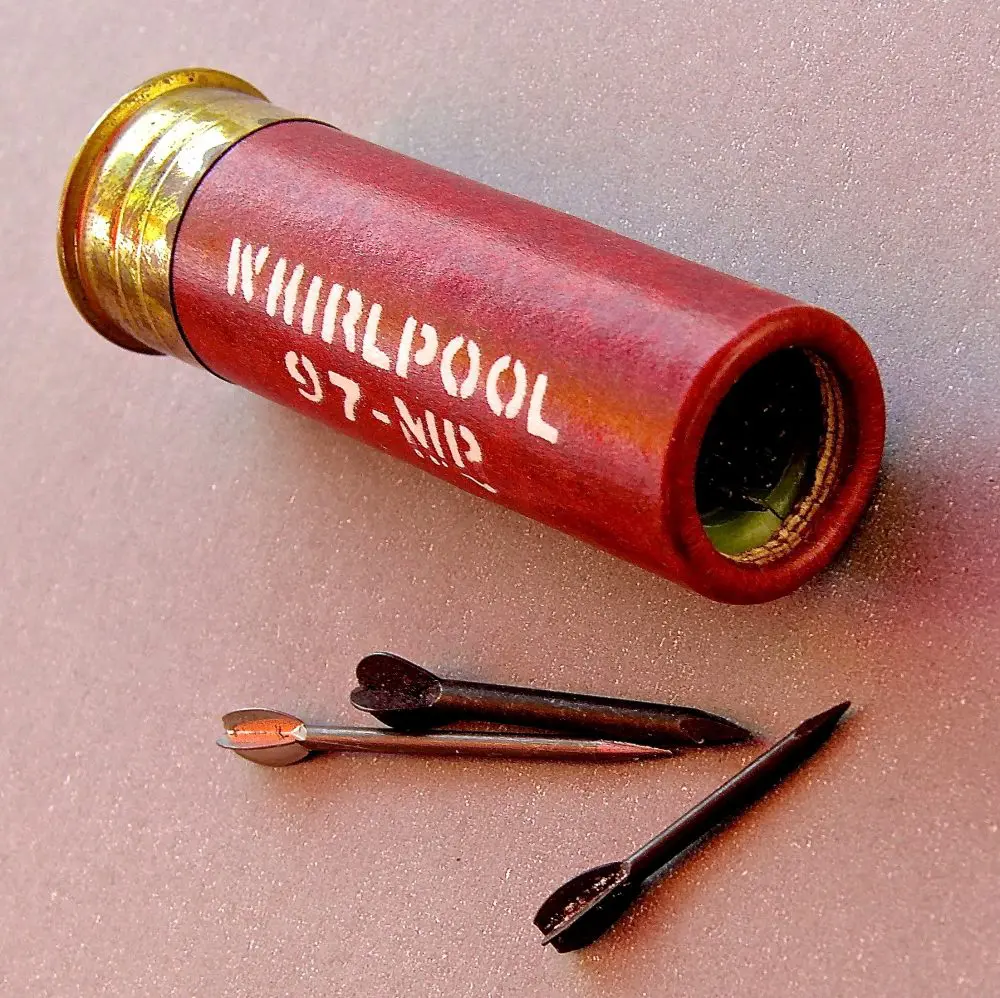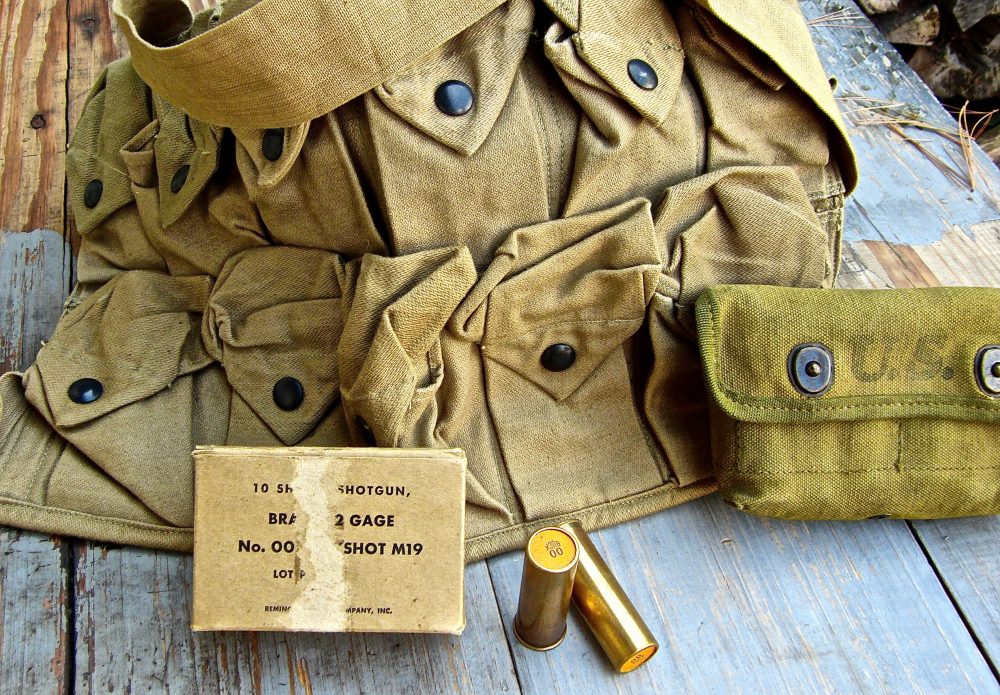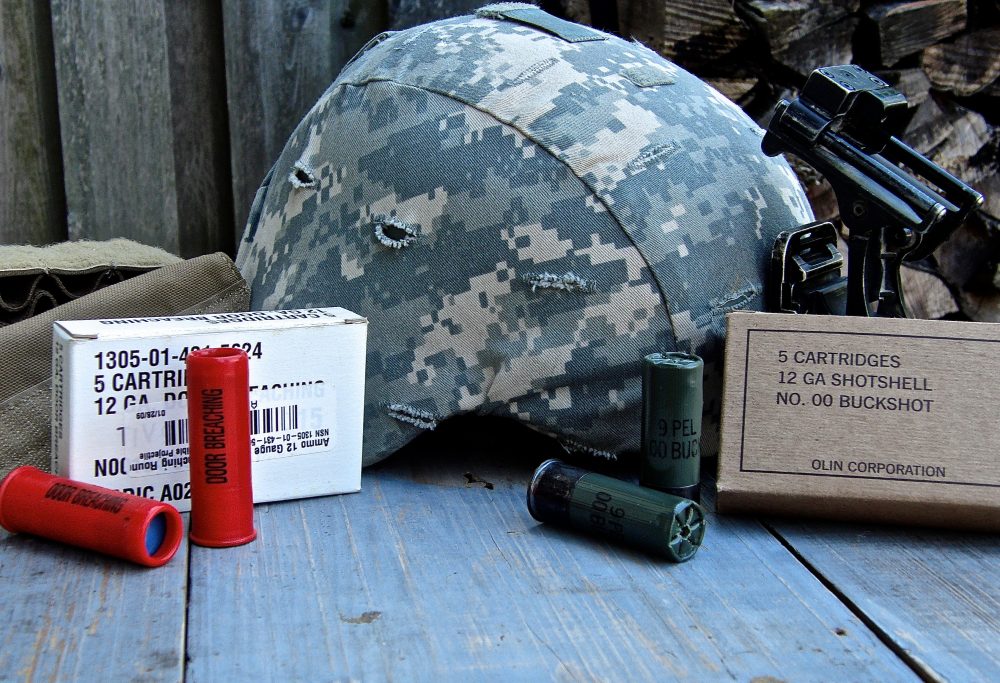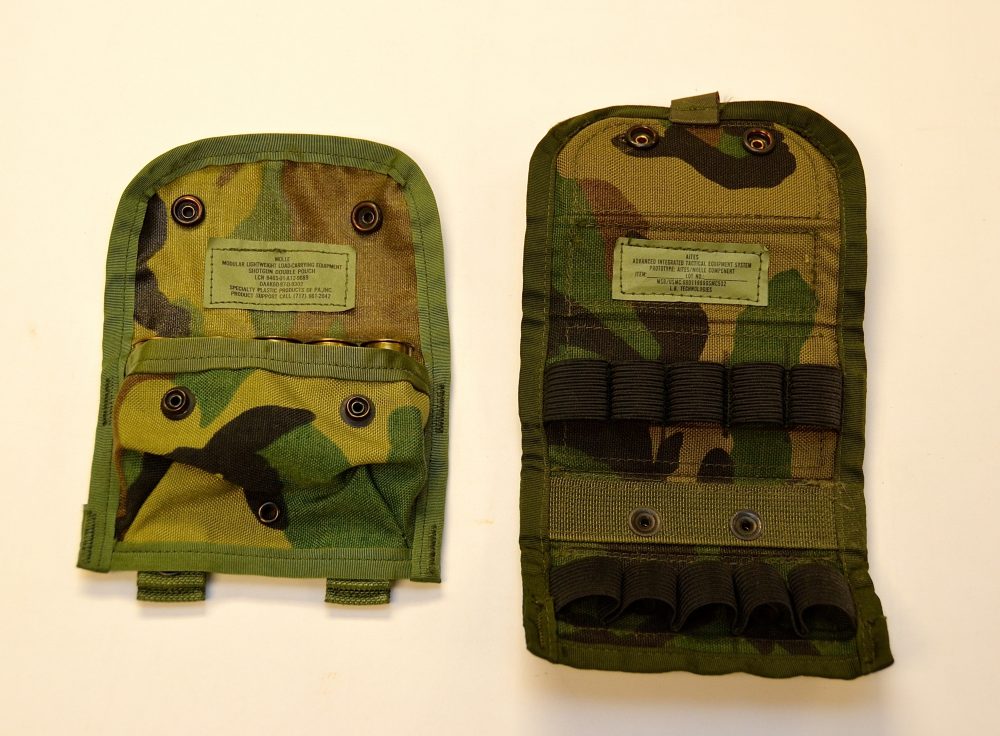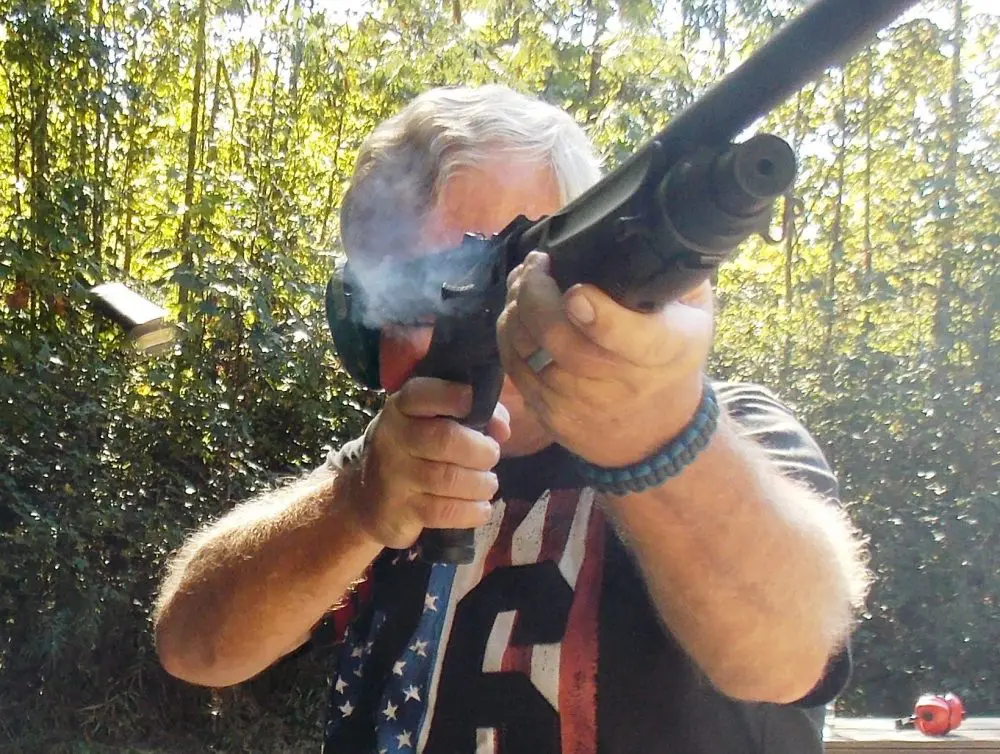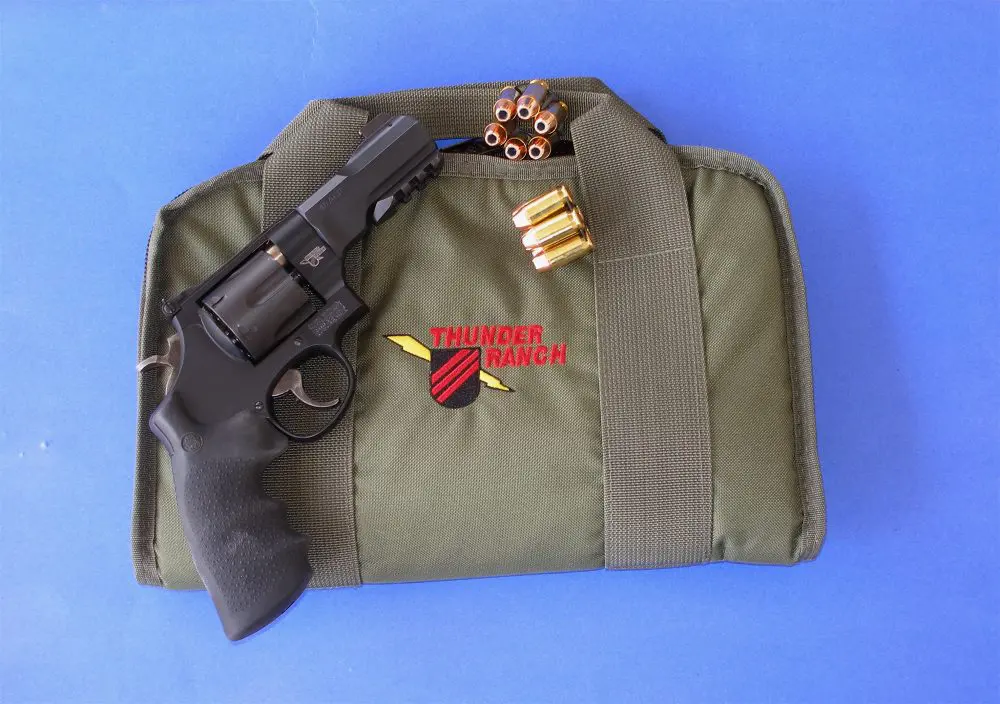
When the Winchester Model 97 Riot Gun was issued during the Philippine Insurrection and the Mexican Punitive Expedition, it was supplied with paper case commercial buckshot rounds.
During World War I, when far more shotguns were used in trench warfare, primarily Model 97 Trench Guns but also some Remington Model 10 Trench Guns (and also some Model 97 and Model 10 Riot Guns), once again commercial 00 Buckshot rounds were acquired. However, dampness in the trenches caused the paper shells to swell, and reliability issues soon ensued.
This resulted in troops cycling each round they carried through the shotguns before going on a raid or preparing for trench duty to make sure it would feed. This practice actually led to the paper shells becoming even more deformed and unreliable.
To solve this problem, Winchester and, probably, Remington produced 00 buckshot all-brass shotgun shells in boxes of 25. Unfortunately, these cartridges only made it to France just before the Armistice and thus saw little action.
On a positive note, this left enough brass-shelled buckshot ammo for the next 20 or more years, as it was used with U.S. Trench and Riot Guns during the Banana Wars, by China Marines, by Marines guarding the U.S. Mail in the 1920s, at military prisons, and other tasks. During WWI, U.S. troops generally used whatever pouches were handy or thrust spare shotgun shells in their pockets.
Box of late WWII-era M19 brass 00 Buck along with WWI grenade pouch of the type used by U.S. Marines to carry shotgun shells, and standard WWII 12-round belt pouch.
There seems to have been some use of commercial Mills shotgun shell belts, and a pouch usually designated the Model 1918 pouch was developed to be worn over the shoulder using a strap and holding 32 shells. But there is some question among collectors if these were developed for shotgun shells or flare gun shells. In any case, they saw some use.
After World War II, the M1921 shotgun shell pouch was developed for wear on the belt. This canvas pouch had a flap that closed with “lift-the-dot” fasteners and held 12 rounds with internal loops. The low capacity of the pouch may have been indicative that those equipped with shotguns during the post-WWI era were not expecting to be in extended firefights. Or maybe they would have just attached as many pouches as they could fit on the belt. In any case, this basic type of pouch—with only slight changes—remained in use until after the Vietnam War.
Two rounds currently in use for their shotguns by U.S. troops: door-breaching rounds (left) and 00 Buckshot (right).
When the U.S. entered WWII, most of the remaining World War I brass shotgun shells were quickly used up. As a result, once again, commercial paper-case buckshot rounds were acquired from an array of manufacturers. Normally, they were supplied in the standard paper 25-round cartons over-stamped “U.S. Property.”
Shotguns were used widely by facility and defense plant guards in the U.S., where the paper shells did not cause problems. But shotguns were also widely used by the USMC in the Pacific, where the wet humid conditions once again caused the paper shells to swell.
All-brass shells again proved the solution to the problem. Most seem to have been supplied by Winchester. Once the brass buckshot rounds were available, they were sent to the Pacific for the Marines and for use elsewhere overseas, while the paper shells still in stores were used in the U.S.
One type of 24-round pouches currently used by some U.S. units.
On 29 March 1945, the Ordnance Department standardized these all-brass shotgun shells as the “Shell, Shotgun, Brass, 12-Gauge, No. 00 Buck, M19.” Remington received a large order for M19 shotshells. Most commonly encountered were 10-round boxes, but there were also 25-round packages of brass shotgun shells as well.
The standard method for carrying shotgun shells in WWII was the M1938 12-round belt pouch similar to the one made just after WWI. But troops often used whatever they could scrounge.
The Marines, being the heaviest users of trench and riot guns, were often very creative. One solution was to acquire one of the M1918 World War I Grenade Pouch Vests, which had 11 pockets. Originally designed to allow U.S. troops to carry a large number of grenades during the major offensive planned for 1919, the end of WWI made them superfluous. As a result, a large number of them were available in WWII, and Marines acquired them and stuffed the pockets with shotgun shells.
Two styles of shotgun shell carriers used by some U.S. units during the War on Terror. Photo: Jeff Moeller & Mike Spradlin
As with WWI, since the M19 brass shells arrived late in the war, a goodly supply was around for use in Korea and the early days of the Vietnam War. When new shotgun shells were needed, plastic-cased ones were ordered, and they held up well to use in the damp, humid conditions of Southeast Asia.
The two primary types of ammunition acquired were the XM162 00 Buckshot round and the XM257 #4 Buckshot round. Standard packaging for the XM162 was normally a ten-round carton, while early Winchester XM257 loads were in 25-round commercial boxes, but later in GI ten-round cartons.
Probably the most interesting shotshell used in Vietnam was the Beehive round, which was loaded with flechettes. Normally marked “Whirlpool” after the Whirlpool Corporation, which was involved in their development, these rounds saw limited use in Vietnam.
Troops found that the more aerodynamic flechette rounds had greater range but less stopping power. Since the shotgun was usually carried for close-range stopping power, buckshot rounds proved more useful.
Whirlpool “Beehive” rounds loaded with flechettes were used on a limited basis in Vietnam.
After the Vietnam War, the XM162 and XM257 (designated M162 and M257 once fully adopted) remained the primary U.S. shotgun shells, though the M257 saw less use as time passed, and the M162 has been the primary round used during the War on Terror.
Some other special rounds have been developed for use in Afghanistan and Iraq. The large number of building-clearing operations resulted in the adoption of frangible door-breaching rounds. Less-lethal crowd-dispersal loads have also been developed, including the M1013 rubber buckshot and M1012 rubber rocket loads.
A wide array of pouches for carrying shotgun shells has been acquired by individual units, ranging from some that hold 12 rounds and are similar to those used in WWII and Vietnam to some that hold 24 rounds and are the traditional pouch on steroids. Eagle Industries supplied many of these pouches. Other types in various camouflage patterns have also been acquired. Many of these have NSN numbers.
Although the U.S. armed forces have experimented with a variety of shotgun shells over the years—including an internally suppressed one for the SEALs—the basic combat load remains 00 Buckshot. It put down Juramentados in the Philippines and Taliban in Iraq.
It’s been killing Jihadists for more than a century and will likely continue to do so for some time!
